Voyager 1 and the rings of Jupiter
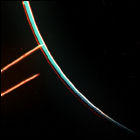 As it nears its closest approach to the planet Jupiter, NASA’s Voyager 1 space probe detects the first likely signs of a ring system around Jupiter’s equatorial region. Barely visible until Voyager 1 is behind the planet and can see them through scattered sunlight, the rings are only about 20 miles thick, but are over 150,000 miles in diameter. The lead time between Voyager 1’s visit and Voyager 2’s later flyby allows ground controllers to plan a better observation campaign for Voyager 1’s sister ship, and the rings are observed in more detail by the later Galileo and New Horizons missions.
As it nears its closest approach to the planet Jupiter, NASA’s Voyager 1 space probe detects the first likely signs of a ring system around Jupiter’s equatorial region. Barely visible until Voyager 1 is behind the planet and can see them through scattered sunlight, the rings are only about 20 miles thick, but are over 150,000 miles in diameter. The lead time between Voyager 1’s visit and Voyager 2’s later flyby allows ground controllers to plan a better observation campaign for Voyager 1’s sister ship, and the rings are observed in more detail by the later Galileo and New Horizons missions.
Voyager 1: Jupiter ahead!
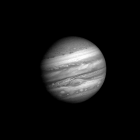 From a distance of 36 million miles, NASA/JPL’s unmanned spacecraft Voyager 1 can already see the planet Jupiter in far greater detail than the cameras aboard Pioneers 10 and 11. Over the next month, Voyager 1 records images as it closes in on its first planetary target, spotting roiling storm clouds and fluid cloud bands with unprecedented clarity; JPL assembles the images into a “movie.” Despite the size of Jupiter at the end of the sequence, Voyager 1 is still over a month away from its closest pass to the giant planet.
From a distance of 36 million miles, NASA/JPL’s unmanned spacecraft Voyager 1 can already see the planet Jupiter in far greater detail than the cameras aboard Pioneers 10 and 11. Over the next month, Voyager 1 records images as it closes in on its first planetary target, spotting roiling storm clouds and fluid cloud bands with unprecedented clarity; JPL assembles the images into a “movie.” Despite the size of Jupiter at the end of the sequence, Voyager 1 is still over a month away from its closest pass to the giant planet.
Voyagers survive the asteroid belt
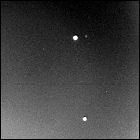 Voyager 1 emerges unharmed from what is considered the outer limit of the asteroid belt between Mars and Jupiter, having entered this 223,000,000-mile-wide zone of space in December 1977. Voyager 2 is expected to emerge similarly unscathed in late October 1978. NASA’s Pioneer 10 and 11 spacecraft had already demonstrated, in the early 1970s, that passage through the asteroid belt without mission-jeopardizing damage is possible. Both spacecraft are already imaging Jupiter from a distance of less than 180,000,000 miles, now meeting or exceeding the resolution of the best photos of Jupiter taken from Earth-based telescopes.
Voyager 1 emerges unharmed from what is considered the outer limit of the asteroid belt between Mars and Jupiter, having entered this 223,000,000-mile-wide zone of space in December 1977. Voyager 2 is expected to emerge similarly unscathed in late October 1978. NASA’s Pioneer 10 and 11 spacecraft had already demonstrated, in the early 1970s, that passage through the asteroid belt without mission-jeopardizing damage is possible. Both spacecraft are already imaging Jupiter from a distance of less than 180,000,000 miles, now meeting or exceeding the resolution of the best photos of Jupiter taken from Earth-based telescopes.
Voyager 2’s mission, should it choose to accept it…
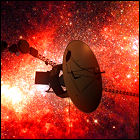 Following a communications blackout scare in April 1978, JPL uploads an autonomous command sequence to the Voyager 2 unmanned space probe, which would allow the spacecraft to carry out a self-guided mission to Jupiter and Saturn, the results of which would automatically be transmitted to Earth even if Voyager 2 can receive no further instructions from Earth. Due to the command storage limitations of Voyager 2’s onboard computer, this automatic backup mission plan makes no allowances for pictures of Jupiter, saving that capability for Saturn instead. In the event that Voyager 2 can no longer hear commands from Earth, the extended mission to Uranus and Neptune would be forfeited in favor of “minimum science return” from Jupiter and Saturn.
Following a communications blackout scare in April 1978, JPL uploads an autonomous command sequence to the Voyager 2 unmanned space probe, which would allow the spacecraft to carry out a self-guided mission to Jupiter and Saturn, the results of which would automatically be transmitted to Earth even if Voyager 2 can receive no further instructions from Earth. Due to the command storage limitations of Voyager 2’s onboard computer, this automatic backup mission plan makes no allowances for pictures of Jupiter, saving that capability for Saturn instead. In the event that Voyager 2 can no longer hear commands from Earth, the extended mission to Uranus and Neptune would be forfeited in favor of “minimum science return” from Jupiter and Saturn.
Voyaging silently onward?
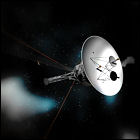 NASA’s Voyager 2 space probe, leaving the inner solar system en route to a grand tour of the outer planets, suddenly stops transmitting to Earth, failing to acknowledge commands sent by its ground controllers. Any chance of the probe conducting its studies of Jupiter and Saturn, let alone Uranus or Neptune, is in serious jeopardy. Discovering a problem with Voyager 2’s ability to compensate for the Doppler shift in signals coming from Earth, NASA engineers devise a workaround to compensate for this problem from the ground, saving the mission.
NASA’s Voyager 2 space probe, leaving the inner solar system en route to a grand tour of the outer planets, suddenly stops transmitting to Earth, failing to acknowledge commands sent by its ground controllers. Any chance of the probe conducting its studies of Jupiter and Saturn, let alone Uranus or Neptune, is in serious jeopardy. Discovering a problem with Voyager 2’s ability to compensate for the Doppler shift in signals coming from Earth, NASA engineers devise a workaround to compensate for this problem from the ground, saving the mission.
Voyaging blindly onward?
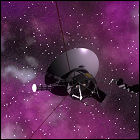 NASA’s Voyager 1 space probe, en route to its first destination, develops a potentially mission-jeopardizing problem: the scan platform, which contains and aims many of Voyager’s scientific instruments, jams and becomes stuck in place. As Voyager 1 has yet to even reach Jupiter, this threatens to make it an expensive failure. Transmitting commands from Earth to give the scan platform a gentle three-axis workout, engineers at NASA manage to free the stuck instruments, salvaging Voyager 1’s mission to the outer planets and their moons. (A similar fault develops in Voyager 2 during its 1981 encounter with Saturn.)
NASA’s Voyager 1 space probe, en route to its first destination, develops a potentially mission-jeopardizing problem: the scan platform, which contains and aims many of Voyager’s scientific instruments, jams and becomes stuck in place. As Voyager 1 has yet to even reach Jupiter, this threatens to make it an expensive failure. Transmitting commands from Earth to give the scan platform a gentle three-axis workout, engineers at NASA manage to free the stuck instruments, salvaging Voyager 1’s mission to the outer planets and their moons. (A similar fault develops in Voyager 2 during its 1981 encounter with Saturn.)
Voyager 1 leaves Earth
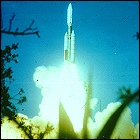 The unmanned robotic Voyager 1 space probe lifts off on a voyage to Jupiter, Saturn and beyond, taking advantage of a once-in-175-years alignment of the planets in the outer solar system. Originally designated Mariner 11, one of many planned space probes in the now greatly scaled-back Mariner Jupiter/Saturn ’77 program, Voyager 1 is also the first spacecraft to take a picture of the Earth and its moon from beyond the moon’s orbit, and will become the first human-made object to leave Earth’s solar system.
The unmanned robotic Voyager 1 space probe lifts off on a voyage to Jupiter, Saturn and beyond, taking advantage of a once-in-175-years alignment of the planets in the outer solar system. Originally designated Mariner 11, one of many planned space probes in the now greatly scaled-back Mariner Jupiter/Saturn ’77 program, Voyager 1 is also the first spacecraft to take a picture of the Earth and its moon from beyond the moon’s orbit, and will become the first human-made object to leave Earth’s solar system.
Voyager 2 launches
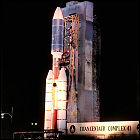 NASA launches Voyager 2 (weeks ahead of Voyager 1), giving the unmanned space probe the best shot of taking advantage of a favorable planetary alignment known as the “Grand Tour”. Using a series of carefully calculated gravity assists, Voyager has the potential to visit all four of the major outer gas planets – Jupiter, Saturn, Uranus and Neptune – in under 15 years without having to expend fuel to make the trip. If Voyager 2 survives long enough to visit Uranus or Neptune, it will become the first man-made spacecraft to visit either planet.
NASA launches Voyager 2 (weeks ahead of Voyager 1), giving the unmanned space probe the best shot of taking advantage of a favorable planetary alignment known as the “Grand Tour”. Using a series of carefully calculated gravity assists, Voyager has the potential to visit all four of the major outer gas planets – Jupiter, Saturn, Uranus and Neptune – in under 15 years without having to expend fuel to make the trip. If Voyager 2 survives long enough to visit Uranus or Neptune, it will become the first man-made spacecraft to visit either planet.
Jupiter probe, Space Telescope approved
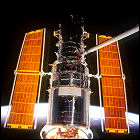 Congress approves the largest NASA budget in ten years, including authorization and funding for two major unmanned spacecraft: a Space Telescope to be deployed into Earth orbit via Space Shuttle, and a yet-to-be-named Jupiter orbiter and atmospheric probe, originally proposed in the late 1960s as part of the outer planets Grand Tour mission plan. The Jupiter probe, which must be ready to launch in 1982 to take advantage of a planetary configuration providing the shortest distance between Earth and Jupiter, is the subject of a fierce budget fight in Congress. (This spacecraft will go on to be named Galileo.)
Congress approves the largest NASA budget in ten years, including authorization and funding for two major unmanned spacecraft: a Space Telescope to be deployed into Earth orbit via Space Shuttle, and a yet-to-be-named Jupiter orbiter and atmospheric probe, originally proposed in the late 1960s as part of the outer planets Grand Tour mission plan. The Jupiter probe, which must be ready to launch in 1982 to take advantage of a planetary configuration providing the shortest distance between Earth and Jupiter, is the subject of a fierce budget fight in Congress. (This spacecraft will go on to be named Galileo.)
Now, Voyager
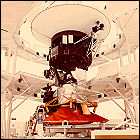 NASA Administrator James Fletcher announces that the ambitious twin Mariner Jupiter/Saturn ’77 space probes, due to be launched later in the year, have been christened with new names: Voyager 1 and Voyager 2. The name change has been initiated by recently-promoted Voyager program manager John Casani, who thinks the spacecraft need a name that’s less of a mouthful (the name “Discoverer” was also considered). For the first time, NASA openly admits that one of the vehicles – Voyager 2 – may continue on to Uranus and Neptune should its Saturn flyby go well in 1981, depending on the spacecraft’s health.
NASA Administrator James Fletcher announces that the ambitious twin Mariner Jupiter/Saturn ’77 space probes, due to be launched later in the year, have been christened with new names: Voyager 1 and Voyager 2. The name change has been initiated by recently-promoted Voyager program manager John Casani, who thinks the spacecraft need a name that’s less of a mouthful (the name “Discoverer” was also considered). For the first time, NASA openly admits that one of the vehicles – Voyager 2 – may continue on to Uranus and Neptune should its Saturn flyby go well in 1981, depending on the spacecraft’s health.
Themisto
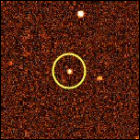 Astronomers catch fleeting glimpses of a new natural satellite of Jupiter, Themisto, though the initial estimates of its orbit are “off” enough that Themisto becomes “lost” and isn’t observed again until 2000. With a diameter of roughly five miles, Themisto marks the dividing line between the larger inner moons of Jupiter and the widely-scattered menagerie of asteroid-like outer moons orbiting the planet. Astronomers Elizabeth Roemer and Charles Kowal (who discovered another new Jovian moon in 1974) share credit for discovering the moon. Themisto is the last Jovian satellite to be discovered by ground-based telescope in the 20th century.
Astronomers catch fleeting glimpses of a new natural satellite of Jupiter, Themisto, though the initial estimates of its orbit are “off” enough that Themisto becomes “lost” and isn’t observed again until 2000. With a diameter of roughly five miles, Themisto marks the dividing line between the larger inner moons of Jupiter and the widely-scattered menagerie of asteroid-like outer moons orbiting the planet. Astronomers Elizabeth Roemer and Charles Kowal (who discovered another new Jovian moon in 1974) share credit for discovering the moon. Themisto is the last Jovian satellite to be discovered by ground-based telescope in the 20th century.
Pioneer 11 visits Jupiter
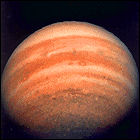 NASA’s Pioneer 11 space probe passes close to Jupiter, barely 27,000 miles above the giant planet’s cloudtops, again encountering radiation capable of frying spacecraft electronics. Pioneer 11 captures the first images of Jupiter’s polar cloud structure and pulls off a daring gravity assist maneuver: the planet’s gravity flings Pioneer 11 up and over the north polar region and across the solar system for a 1979 rendezvous with Saturn, the first spacecraft to visit that planet.
NASA’s Pioneer 11 space probe passes close to Jupiter, barely 27,000 miles above the giant planet’s cloudtops, again encountering radiation capable of frying spacecraft electronics. Pioneer 11 captures the first images of Jupiter’s polar cloud structure and pulls off a daring gravity assist maneuver: the planet’s gravity flings Pioneer 11 up and over the north polar region and across the solar system for a 1979 rendezvous with Saturn, the first spacecraft to visit that planet.
Leda
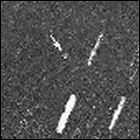 Astronomer Charles Kowal discovers Leda, a tiny, previously undiscovered moon of Jupiter, using Mount Palomar Observatory’s telescope. With a radius of less than seven miles and an inclined orbit, Leda is the first Jovian moon discovered in over two decades, and is among the last to be discovered using ground-based telescopes in the 20th century.
Astronomer Charles Kowal discovers Leda, a tiny, previously undiscovered moon of Jupiter, using Mount Palomar Observatory’s telescope. With a radius of less than seven miles and an inclined orbit, Leda is the first Jovian moon discovered in over two decades, and is among the last to be discovered using ground-based telescopes in the 20th century.
Pioneer 10: Jupiter’s first visitor from Earth
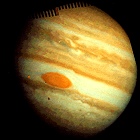 NASA’s Pioneer 10 space probe, launched in 1972 and boosted to unprecedented speeds by a three-stage rocket, makes its closest pass to the planet Jupiter, the first human-made vehicle to do so. Zooming past Jupiter’s equator at a distance of less than 100,000 miles, Pioneer 10’s electronics are nearly fried by the giant planet’s intense radiation. Pioneer 10 presses on toward the edge of the solar system, continuing to report back through the 1990s.
NASA’s Pioneer 10 space probe, launched in 1972 and boosted to unprecedented speeds by a three-stage rocket, makes its closest pass to the planet Jupiter, the first human-made vehicle to do so. Zooming past Jupiter’s equator at a distance of less than 100,000 miles, Pioneer 10’s electronics are nearly fried by the giant planet’s intense radiation. Pioneer 10 presses on toward the edge of the solar system, continuing to report back through the 1990s.
Pioneer 11 launched
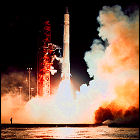 The unmanned space probe Pioneer 11 is launched on a course that will be one of the first real tests of the theory of gravity assist. Reaching Jupiter in 1975, it will use the giant planet’s gravity to throw it across the solar system to rendezvous with Saturn, the first human-made vehicle to visit that planet. The experience gained with Pioneer 11’s groundbreaking trajectory through the solar system will prove instrumental in the upcoming Mariner Jupter/Saturn ’77 mission, which is later be renamed Voyager.
The unmanned space probe Pioneer 11 is launched on a course that will be one of the first real tests of the theory of gravity assist. Reaching Jupiter in 1975, it will use the giant planet’s gravity to throw it across the solar system to rendezvous with Saturn, the first human-made vehicle to visit that planet. The experience gained with Pioneer 11’s groundbreaking trajectory through the solar system will prove instrumental in the upcoming Mariner Jupter/Saturn ’77 mission, which is later be renamed Voyager.
Mariner Jupiter/Saturn ’77
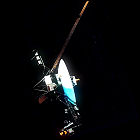 Having spent six years wrangling with various mission profiles for a “Grand Tour” of the outer solar system, made possible by a favorable planetary alignment occurring only once every 175 years, NASA finally authorizes a very stripped-down version of its original ambitious Grand Tour plans. The Mariner Jupiter/Saturn ’77 mission will consist of two twin unmanned spacecraft to be launched in 1977, each on a course to explore Jupiter, and then to use Jupiter’s gravity to deflect them to Saturn. These spacecraft will be renamed Voyager 1 and Voyager 2 just a few months before lifting off.
Having spent six years wrangling with various mission profiles for a “Grand Tour” of the outer solar system, made possible by a favorable planetary alignment occurring only once every 175 years, NASA finally authorizes a very stripped-down version of its original ambitious Grand Tour plans. The Mariner Jupiter/Saturn ’77 mission will consist of two twin unmanned spacecraft to be launched in 1977, each on a course to explore Jupiter, and then to use Jupiter’s gravity to deflect them to Saturn. These spacecraft will be renamed Voyager 1 and Voyager 2 just a few months before lifting off.
Pioneer 10 launched
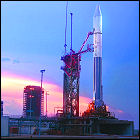 NASA launches Pioneer 10, the first spacecraft sent to study the huge planet Jupiter at close range. Its Atlas-Centaur booster gives it a good head start, propelling it to over 32,000 miles per hour en route to Jupiter, the fastest man-made object in history at this point. Pioneer 10 is also the first man-made vehicle to traverse the asteroid belt, with instruments detecting fewer large particles than anticipated. It will reach Jupiter in late 1973.
NASA launches Pioneer 10, the first spacecraft sent to study the huge planet Jupiter at close range. Its Atlas-Centaur booster gives it a good head start, propelling it to over 32,000 miles per hour en route to Jupiter, the fastest man-made object in history at this point. Pioneer 10 is also the first man-made vehicle to traverse the asteroid belt, with instruments detecting fewer large particles than anticipated. It will reach Jupiter in late 1973.
The Grand Tour
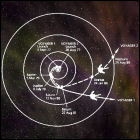 The Grand Tour Outer Planets mission is proposed to NASA by the Jet Propulsion Laboratory. Using a combination of the gravitational assist trajectories computed by JPL’s Michael Minovitch in 1961, Caltech/JPL grad student Gary Flandro has identified a favorable alignment of the outer planets which would allow for a single spacecraft to reach Jupiter, Saturn, Uranus, Neptune and Pluto within two decades. Vehicles taking advantage of this planetary alignment must lift off at very precise times during 1977 and 1978, and the alignment will not occur again for nearly 200 years. An ambitious plan is laid out for multiple flyby vehicles with atmospheric probes for every gas planet and landers for specific moons of interest, launched by Saturn V rockets. Budget realities scale this plan back: flybys will be carried out by two cheaper Mariner vehicles (later renamed Voyager), while the atmospheric and satellite probes – eventually to be renamed Galileo and Cassini – wait even longer to reach their destinations, and the Pluto flyby is scrapped until the 21st century New Horizons probe lifts off. JPL also recommends an inner solar system tryout of the gravitational assist maneuvers required, resulting in the Mariner 10 mission to Venus and Mercury.
The Grand Tour Outer Planets mission is proposed to NASA by the Jet Propulsion Laboratory. Using a combination of the gravitational assist trajectories computed by JPL’s Michael Minovitch in 1961, Caltech/JPL grad student Gary Flandro has identified a favorable alignment of the outer planets which would allow for a single spacecraft to reach Jupiter, Saturn, Uranus, Neptune and Pluto within two decades. Vehicles taking advantage of this planetary alignment must lift off at very precise times during 1977 and 1978, and the alignment will not occur again for nearly 200 years. An ambitious plan is laid out for multiple flyby vehicles with atmospheric probes for every gas planet and landers for specific moons of interest, launched by Saturn V rockets. Budget realities scale this plan back: flybys will be carried out by two cheaper Mariner vehicles (later renamed Voyager), while the atmospheric and satellite probes – eventually to be renamed Galileo and Cassini – wait even longer to reach their destinations, and the Pluto flyby is scrapped until the 21st century New Horizons probe lifts off. JPL also recommends an inner solar system tryout of the gravitational assist maneuvers required, resulting in the Mariner 10 mission to Venus and Mercury.
Gravitational assist
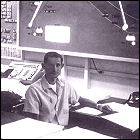 Recent Jet Propulsion Laboratory hire Michael Minovitch submits the first of a series of papers and technical memorandums on the possibility of using carefully-calculated gravitational assist maneuvers to speed transit time between celestial bodies while requiring minimal engine/fuel use. Where most previous scientific thought concentrated on using engine burns (and a lot of fuel) to cancel the effects of a planet’s gravity, Minovitch demonstrated that gravity could be a big help with a carefully calculated trajectory. Though nearly every planetary mission since then has capitalized on Minovitch’s research, it was initially rejected by JPL. Minovitch’s calculations are later revisited by Caltech grad student Gary Flandro, who flags down a particular combination of Minovitch’s pre-computed trajectories for a “grand tour” of the outer solar system, a mission which will eventually be known – in a somewhat scaled-down, less grand form – as Voyager.
Recent Jet Propulsion Laboratory hire Michael Minovitch submits the first of a series of papers and technical memorandums on the possibility of using carefully-calculated gravitational assist maneuvers to speed transit time between celestial bodies while requiring minimal engine/fuel use. Where most previous scientific thought concentrated on using engine burns (and a lot of fuel) to cancel the effects of a planet’s gravity, Minovitch demonstrated that gravity could be a big help with a carefully calculated trajectory. Though nearly every planetary mission since then has capitalized on Minovitch’s research, it was initially rejected by JPL. Minovitch’s calculations are later revisited by Caltech grad student Gary Flandro, who flags down a particular combination of Minovitch’s pre-computed trajectories for a “grand tour” of the outer solar system, a mission which will eventually be known – in a somewhat scaled-down, less grand form – as Voyager.
Ananke
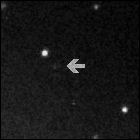 Using a telescope at Mount Wilson Observatory, astronomer Seth Nicholson discovers Ananke, a tiny moon of Jupiter orbiting the huge planet at an average distance of 21 million miles and at a high inclination relative to Jupiter’s equator. Ananke is most likely a captured asteroid or the remnant of a captured asteroid, and other small Jovian moons in the same orbit may be other pieces of the captured (and shredded) body. Ananke is the first Jovian moon discovered in nearly two decades, and it will be over two more decades before another is found.
Using a telescope at Mount Wilson Observatory, astronomer Seth Nicholson discovers Ananke, a tiny moon of Jupiter orbiting the huge planet at an average distance of 21 million miles and at a high inclination relative to Jupiter’s equator. Ananke is most likely a captured asteroid or the remnant of a captured asteroid, and other small Jovian moons in the same orbit may be other pieces of the captured (and shredded) body. Ananke is the first Jovian moon discovered in nearly two decades, and it will be over two more decades before another is found.